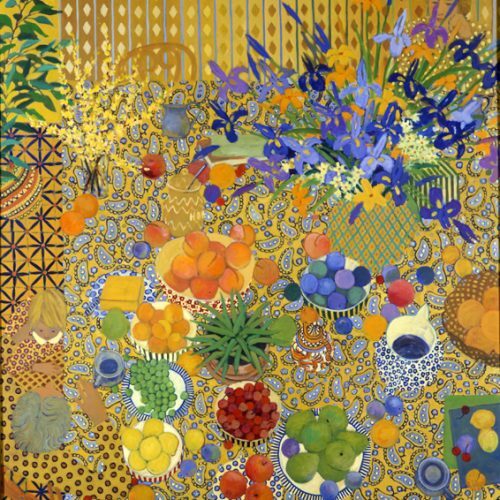SLOW ART
Museums can be overwhelming. So much to see, so little time. What would happen if you decided to view only a limited number of artworks today, and took more time to really look at them? What if, instead of looking at everything quickly, you looked just at a few things slowly?
We invite you to try any of the following four strategies for slow looking and wish you an insightful and memorable experience. All artworks can be found in the Crossing the Divide exhibition on display on the main level of the MOA.
Basic Tips for Slow Looking
Feed your interest: Select artworks that speak to you (or start with our suggestions).
Give it time: Don't worry if nothing comes to mind at first. Let your eyes and your mind wander as you engage with artworks. Really slow down and take your time!
Look BIG

Casting a wide net can yield a range of observations and reveal the complexity of things. Explore and discover everything, everywhere, in any given work of art. No limits, no restrictions!
Examine every aspect of Rose Hartwell's painting A Corner Window in a Pawn Shop. Name 10 different items that are for sale.
Narrow Your Focus

Focusing on something specific gives structure to the viewing experience. Select an artwork and focus on certain types of things, such as colors, shapes, lines, faces, hands, objects, arrangement, or anything that interests you.
Study only the colors, shapes, and patterns in Trifloria, by Jeanne Leighton-Lundberg Clarke and describe them in some detail.
Change your Perspective

Changing physical perspective can lead to the discovery of small details and large patterns. Alter your proximity to an artwork, as well as your vantage point.
Enjoy Robert Indiana's LOVE sculpture from multiple angles, either in person at the MOA or by searching images of it online.
Compare and Contrast
Noticing similarities and differences between artworks can enrich your insights. Compare and contrast two adjacent artworks and describe your observations. Consider color, figures, emotions, and even ideas
each artwork represents.
Try to compare and contrast View of Monterey Bay, by Raymond Dabb Yelland and Great White Throne, by Phillip Henry Barkdull. Consider subject, style, colors, lines, composition, etc.




